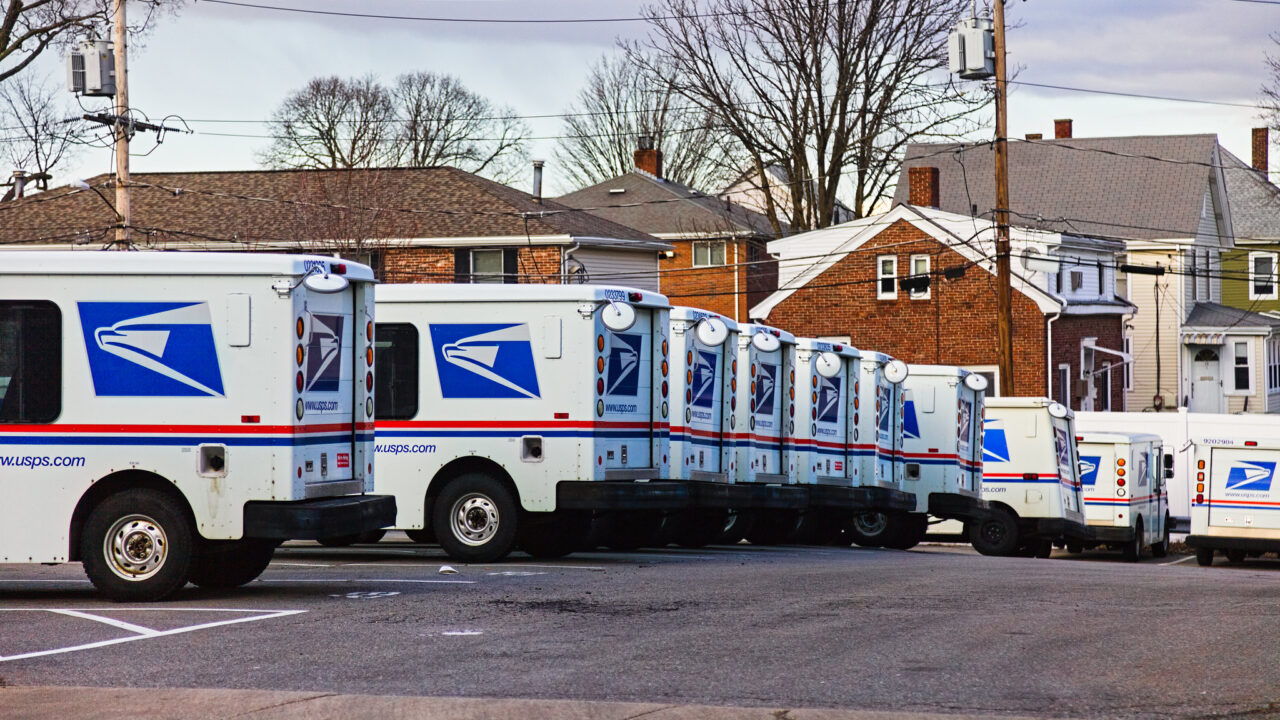 "U.S. Postal Service Mail Trucks" by Sam LaRussa is licensed under CC BY 2.0
"U.S. Postal Service Mail Trucks" by Sam LaRussa is licensed under CC BY 2.0
The U.S. Postal Service Board of Governors, the controlling body of the U.S. Postal Service, will meet Thursday as USPS leadership faces growing pushback over its overhaul of the mail network and delivery practices.
The failures of the U.S. Postal Service continue to stack up as the service faces increasing pressure from its regulator as the Postal Regulatory Commission recently issued an order demanding to know why “service has declined considerably for extended periods of time” across “multiple locations where changes have been implemented.”
The order requires the Postal Service to either submit to an advisory opinion from the Board of Governors or explain why such a review is unnecessary.
Louis DeJoy, the current U.S. Postmaster Master General, testified before the Senate Committee on Homeland Security and Governmental Affairs on April 16th and was grilled by Senators from both parties. In his opening remarks Sen. Rand Paul (R-Ky.) argued that Congress “giving more money to the Postal Service was equivalent to burning money.”
Below is a list of 10 failures of the United States Postal Service that must be addressed.
- Postal Service keeps losing more money. Despite the Postal Service’s mandate to be self-sustaining, the Postal Service reported a $6.5 billion loss in fiscal year 2023 and is projected to lose more than $8 billion in fiscal year 2024.
- DeJoy’s failed “Delivering for America” plan. These loses come despite DeJoy’s claim that his “Delivering for America” restructuring plan would see the Postal Service break even in 2023 and post a $1.7 billion surplus in 2024.
- Runaway Expenses. Controllable expenses exceeded DeJoy’s “Delivering for America” forecast by $19.3 billion, or by 8.7% for FY 2023.
- DeJoy expanding the unionized workforce. As pointed out by the Washington Times, DeJoy converted 125,000 part-time employees into full-time workers. He then went out and hired more part-timers, adding 30,000 careerists to the employment rolls over three years.
- Postal Unions contribute heavily to Democrat candidates. Thus far in the election cycle, postal unions have contributed $1.22 million to Democrat candidates, accounting for roughly 74% of their total political contributions.
- Declining labor productivity. According to USPS’s own FY 2023 report to Congress, labor productivity fell by 11.3 percent in the first three years of DeJoy’s “Delivering for America” plan.
- Mail volume is plummeting. Mail volume has fallen 19% over the past four fiscal years and currently projected to be at the lowest level in 40 years.
- Postal Service spending $3 billion in taxpayer money to buy EVs. Democrats’ misnamed Inflation Reduction included a $3 billion boondoggle for the Postal Service to replace its existing vehicle fleet with electric vehicles (EVs). This is a waste of taxpayer dollars for the postal service to adhere to the Left’s green agenda.
- Failure of new Regional Processing and Distribution Centers. The Postal Service’s rollout of new regional processing and distribution centers (RPDCs) has led to worsened service. For example, after the opening of the new RPDC in Atlanta on-time scores for First Class mail fell from roughly 75 percent to 25 percent. Additionally, the scores for on-time 2-day mail keep plummeting – down to 12 percent, as low as scores have ever been, anywhere. DeJoy chalks up such failures to “network realignment.”
- Postal Service increasingly competing with Private Sector. The Washington Times Editorial Board blasted DeJoy for eliminating contracts with private outside firms engaged in long-haul delivery, calling it his “worst anti-reform.” The private sector was “handling the job efficiently and cost-effectively. Rather than allow that to continue, USPS is bringing that function back in-house,” the Times continues.

